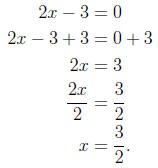Rational Expressions and Rational Equations
1 Simplifying Rational Expressions
Rational functions are nothing more than fractions whose numerators and
denominators are
polynomials. Because they are functions, they have domains. It may not be
possible to
evaluate the function at any real number. Because rational functions are
fractions, having
the denominator be zero gives us something which is undefined. This gives us the
important
idea.
Important Idea. A rational expression is defined exactly where the
denominator is not
zero.
Example 1. Determine the values of variable where each expression is
defined.

Solution. The function is defined exactly where the
denominator is not zero. Therefore, we
find where the denominator is zero and eliminate those possibilities. The
denominator will
be zero when

Using the quadratic formula, we have
a = 1, b = 4, c = -5.
The discriminant is then

The zeros are then given by
 and
and

Thus, the domain of the expression will be all real numbers except 1 and -5.
Example 2. Determine the value of the variables where the rational expression is defined.

Solution. Again, the expression will be defined where the
denominator is not zero. Thus, we
need to solve
 |
|
| (add 3 to both sides) | |
| (divide both sides by 2) | |
Thus the expression will be defined for all real numbers
except  .
.
Example 3. Determine the values of the variables where the denominator is
defined.

Solution. The expression will be defined where the
denominator is not zero. We then find
where the denominator is zero and we eliminate those values. We therefore need
to solve

Identifying the coefficients
a = 1, b = 1, c = 2.
Computing the discriminant, we have
 no real solutions
no real solutions
Since the denominator is never zero, no values have to be
eliminated. This means the function
is defined for all real numbers.
Simplifying rational expressions is exactly like simplifying fractions. You
factor the num-berator
and the denominator into primes and the cancel common factors between numerator
and denominator.
Example 4. Simplify 
Solution. In the denominator, we can take out a factor of
3.
3x + 9 = 3x + 3(3) = 3(x + 3).
Likewise, in the numerator we can take out a factor of 3 to give us
12x = 3(4x).
In our rational expression we then have

Thus, our simplified expression is



